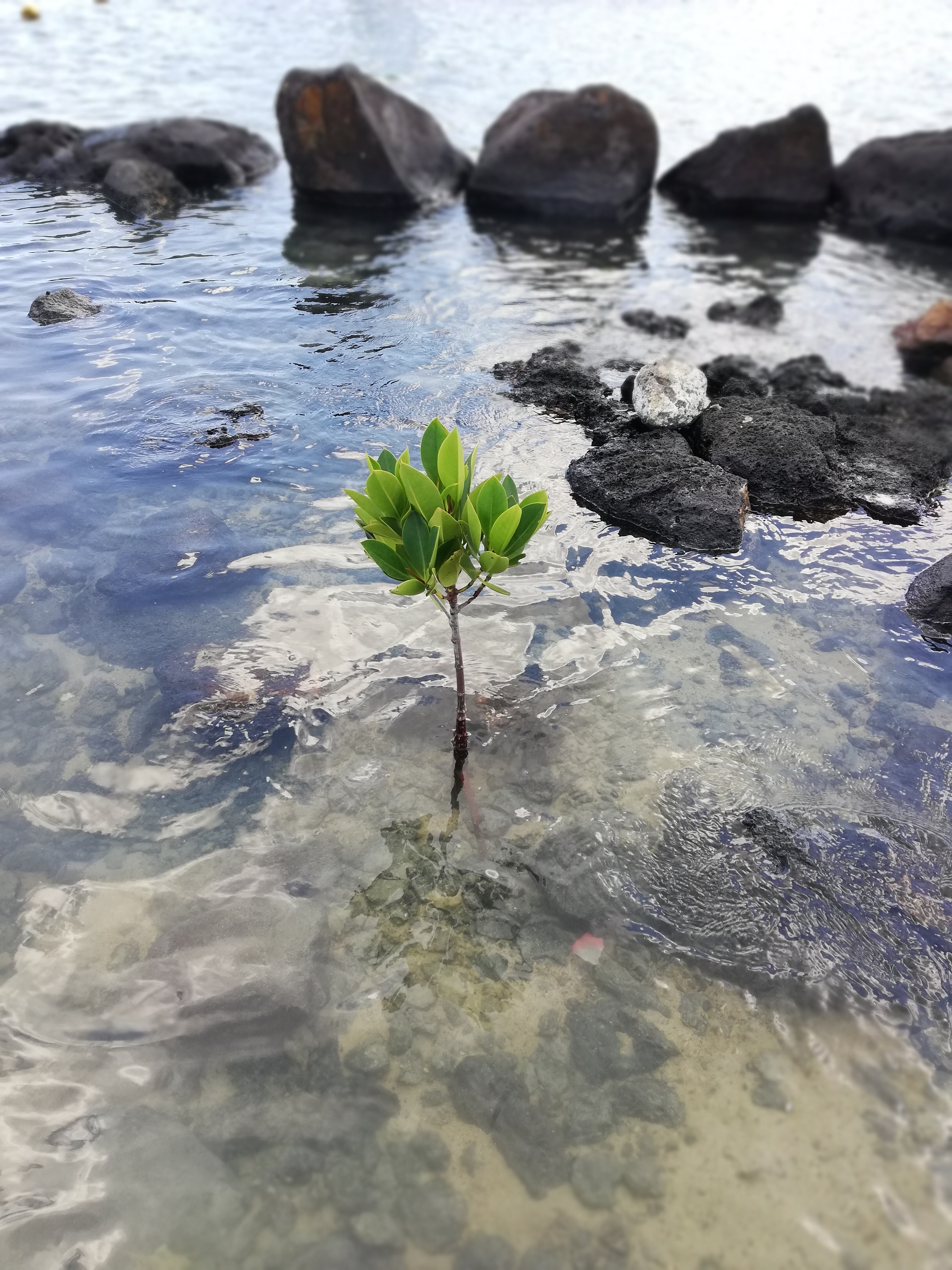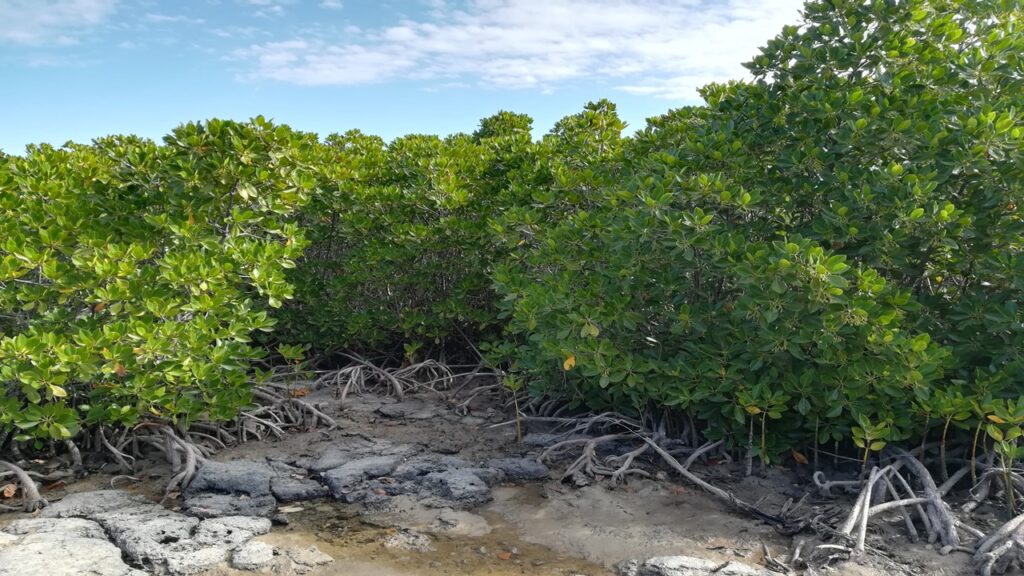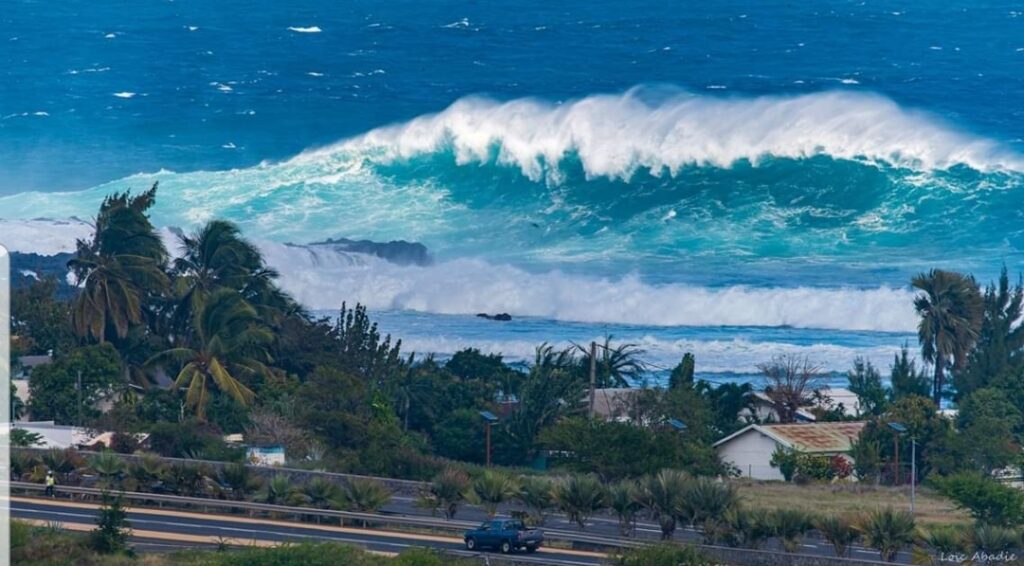Why islands must protect their mangroves

Clearing mangroves in the estuaries and marshes of small islands was common some years ago. We mainly dumped trash there and thought they were insect breeding sites. Eventually, as we understood the important role of these habitats, efforts to protect and restore degraded forests started. In many places like Mauritius, the law prevents people from cutting mangrove trees. In others, we confer international protection to unique expanses as RAMSAR sites.
Even though mangrove forests are important along both continents and islands, small, remote islands rely more on the benefits of these swamps.

Stabilize and protect the coast
Just like other trees, mangrove roots trap sediment and prevent soil erosion. However, in this case, mangrove trees are key elements in preventing coastal erosion.
Mangroves stabilize the coast
The constant movement of waves and tides inevitably washes land away. The strong roots of these trees hold the sediment in place and prevent it from being washed away. What’s more, as mud is deposited on the seaward side of the forests, mangrove propagules grow and develop into new trees. In this way, they allow the land to extend towards the sea.
Protect other marine ecosystems
In the same way, mangroves trees also trap sediment from the land and prevent it from getting into the sea. Otherwise, it would disrupt the growth and development of coral reefs. As it is, polyps need shallow clear waters to grow. Wherever there are mangroves trees, coral reefs and seagrass forests can develop beautifully.
Mangroves are pollutant sinks
These bogs are also important pollutant sinks. Basically, polluted runoff from the land accumulates in mangrove sediment. The magroves then take up these pollutants from the sediment and lock them in their leaves.
Protection against tsunamis
As a matter of fact, the 2004 tsunami rang the alarm bell for mangrove conservation in the tropics and subtropics. Economists and ecologists worked together and concluded that the actual benefits of mangrove forests as coastal protectors are more valued than other uses.
For example, the Kulhudhufushi mangrove forest in the Maldives provided this low lying island ample protection during the tsunami.
Source of income for the coastal population
Healthy mangrove forests are vital for the coastal populations as well. Most of them are fishermen or utilize materials from mangroves for their day-to-day activities. In the Solomon Islands, for instance, 85% of the population depends on the mangrove environment for their livelihoods.
Support fisheries and crustacean catches
Also, mangrove forests are important nursery sites for marine organisms to develop. In this way, these marshes support fisheries and crustacean catches. As an example, on the Caribbean Islands, mangroves have been destroyed by pollution and land reclamation by approximately 1.7%/year. Consequently, fisheries have also decreased at the same rate.
Uses of mangroves
Globally, the uses of mangroves amount to $1.648 billion per year. In general, islanders rely heavily on their immediate environment. Local people use the wood for constructing houses and boats. In the same manner, they use dead branches for firewood. Farmers also get honey when bees pollinate mangrove flowers.
Important food source for many organisms
Mangrove trees are typically located on the delicate border between the land and the sea. This strategical position acts as a food center for a wide variety of organisms. Juvenile creatures that develop in the swamps get their food through the ebb and flow of seawater that carry along planktons and nutrients.
Baby fishes, sharks, rays, turtles, sea birds, flamingos and molluscs all feed on the incoming materials. An intricate food web consisting of marine organisms, insects, birds, mammals etc. thus exists in mangrove forests.
Unique organisms on islands that depend on mangroves
Indeed, there are many organisms that live exclusively in the mangrove forests of small islands.
For example, the endemic Galapagos Penguin, a critically endangered species, feeds only on mangrove contents. Likewise, there are only 100 Mangrove Finches on the Galapagos Island that live only in the mangrove forest.
Dugongs are also a vulnerable species that inhabit the waters between East Africa and the Vanuatu Islands west of Australia. They feed mainly on seagrass near mangroves and need the shallow water near these forests to live and reproduce successfully.
Climate change
Protection against cyclones and sea level rise
One of the most important benefits of mangrove forests to islands is undeniably their protective cover. Mangrove forests form a protective belt around islands and shield them from the impacts of violent waves and storm surges. With changes in the weather happening globally, the intensity of cyclones is expected to increase in the future. Sea level is also rising every year, with an estimated rise of up to 0.98 m by 2100 [1]. Remote islands are especially at risk of threatening cyclones and sea-level rise.
Storing blue carbon
Blue carbon is the carbon that oceans and coastal ecosystems store. Mangrove forests alone have the capacity to trap and store some 34 million metric tons of carbon per year [2]. Together with other wetland environments like marshes and kelp forests, mangrove forests can store 50-90% of emitted carbon in their sediment. In fact, mangals can store 5 to 10 times more carbon per unit area compared to tropical rainforests [3].
We must protect mangroves
As it is, mangroves are vital for small island communities for their ecological and economical benefits. Now, in view of the Paris Agreement, governments have to focus on mangrove protection and conservation more than ever before to help mitigate the effects of climate change.
Undoubtedly, sea-level rise will be a major problem for islanders. But mangroves that we plant and protect now will also protect us in the future.

References:
- IPCC, 2013: Climate Change 2013: The Physical Science Basis. Contribution of Working Group I to the Fifth Assessment Report of the Intergovernmental Panel on Climate Change [Stocker, T.F., D. Qin, G.-K. Plattner, M. Tignor, S.K. Allen, J. Boschung, A. Nauels, Y. Xia, V. Bex and P.M. Midgley (eds.)]. Cambridge University Press, Cambridge, United Kingdom and New York, NY, USA, 1535 pp.
- Wright, M. (2017). Coastal wetlands excel at storing carbon. Eurekalert. [Online]. Available at https://www.eurekalert.org/pub_releases/2017-02/uom-cwe012617.php [Accessed 25/03/2019]
- Quarto, A. (2017). Mangroves under threat. Travindy. [Online]. Available at https://www.travindy.com/2017/10/mangroves-under-threat-tourism-watch-informationsdienst-tourismus-und-entwicklung/ [Accessed 25/03/2019]

Pingback: Effects of Droughts: Positive, Negative, Examples - Yo Nature
Pingback: Sustainable Tourism, Green Tourism, Ecotourism Explained - Yo Nature
Pingback: What is global warming? - Yo Nature